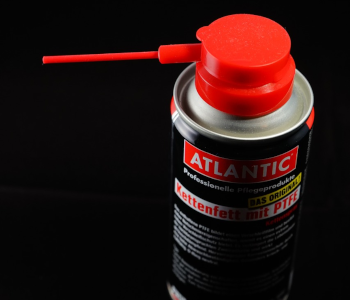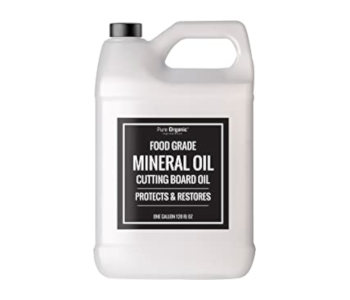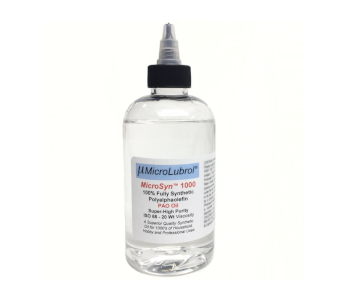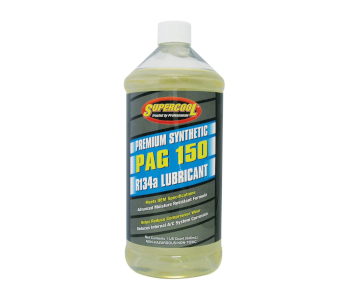Tips on Lubricating Plastic Gears, Bearings, and Other Parts
Lubrication is an essential component of just about all moving parts, especially in industrial settings. Their main purpose is to reduce the friction between moving parts, thus allowing them to perform more consistently and greatly reduce both wear and tear and power consumption. Depending on the material of the lubricant, it can also act as a buffer against sudden temperature changes or protect against oxidation.
In this article, we will be focusing on the lubrication of parts made of plastic. Although plastic has proven to be a fairly reliable material, it lacks the chemical stability and mechanical strength of metal. This is only one of many factors to be considered when choosing a lubricant for plastic parts.
Consider chemical compatibility
The first thing to consider when choosing lubricants is the material of the plastic parts to which it will be applied. The last thing you will want is for your lubricant to react with the plastic, causing loosening of the parts or any premature degradation.
Although we’ve listed chemical compatibility as the first step of the lubricant selection process, this will be a common them throughout each step. This will hold true for each ingredient in a lubricant – the oil base, the thickener, and any necessary additives.
Mineral oil or synthetic oil?

The oil is the base ingredient of the lubricant. It’s the compound that gives lubricants their unique friction-reducing capability. Although there are lots of oils used in lubricants, they can be classified into two broad categories – mineral oils and synthetic oils. However, blends that combine both mineral and synthetic oils are also common.
Mineral oils are the more conventional option, mostly because they are cheaper. On the molecular level, mineral oils are typically composed of alkanes distilled from petroleum-based sources. They are often manufactured as a byproduct of the distillation of crude oil to make gasoline and other petroleum products.
The term ‘synthetic oil’ is a bit of misnomer because it’s also derived from mineral oil. By subjecting mineral oils through extensive treatment, synthetic oil is merely a version with significantly fewer impurities and undesired substances. This makes synthetic oils less prone to leaving residue or “sludge.” During the same process, the chemical composition of synthetic oils can also be altered to make them more appropriate for specific applications.
Between the two, synthetic oils are clearly superior. The oil film that a synthetic oil makes is generally stronger an equivalent film made with mineral oil and has better thermal stability. In comparison, mineral oils are more prone to thickening at low temperatures and volatilizing at higher temperatures. The biggest downside of synthetic oils is that they are much more expensive.
Regardless of the choice between mineral or synthetic oils, chemical compatibility must still be considered. Most mineral oils generally have good compatibility across different plastics. On the other hand, the use of synthetic oils has to be done a bit more selectively. For instance, Polyalkylene Glycol (PAG) oil cannot be used with ABS, PVC, or PC.
When to use grease vs. oil
In some instances, grease can be a more appropriate lubricant than plain oil. The difference between the two is quite simple. Grease is merely an oil treated with a thickener, giving it a viscosity that is much higher than oil. However, they still have the same basic function when applied to moving parts.
The choice between grease and oil is a question of the demands of the application. For parts that move at high speed, the thin film capabilities of oil are much more appropriate. They also have better wetting capabilities that allow them to flow into small spaces in a gear or bearing assembly. However, the more liquid-like characteristic of oil means that it can still flow even under intense surface tension. This makes oil problematic as a lubricant for parts that are oriented vertically.
Grease is the lubricant of choice for parts meant to carry heavy loads. The film created by grease is much stronger, making it harder to break under intense conditions. The viscosity of grease also makes it suitable for vertically oriented parts, as it has less tendency to flow.
Choose an appropriate thickener for grease
There is a wide variety of thickeners used in lubricants including PTFE, Bentonite, aluminum, and amorphous silica among others. If you choose to use grease for lubrication, the choice of thickener adds another layer of complexity to determining which product is suitable for your needs. Different thickeners have different responses to extreme temperatures, corrosion, exposure to moisture, and wear and tear.
For the most part, thickeners are a very specialized component in lubricants. A grease that can withstand constant exposure to moisture may not provide much protection from mechanical wear. Conversely, a grease with good corrosion protection may not be appropriate for low friction applications. The best part about thickeners is that they rarely pose problems in compatibility with oils, especially if you’re buying a prepared grease product.
Additives can give your lubricant special abilities
Additives are optional components in both oils and greases that grant highly specialized abilities. This can range from corrosion inhibition, stability against extreme pressures, anti-scuffing, and tackifying. The judicious use of additives relies mainly on the requirements of the applications or the conditions in which the lubricant will be used.
Use solid lubricants between two ultra-smooth surfaces
Getting a lubricant to stick to a polished or very smooth surface can be very problematic. However, this really only becomes an issue if a lubricant needs to be placed between two surfaces with such characteristics. In this case, a solid lubricant may be a more reliable option. Polytetrafluoroethylene (PTFE or, more commonly, Teflon) or Molybdenum Disulfide (MoS2) are two of the most commonly used solid lubricants.
Some common lubricants for plastic parts
This list is by no means a complete list of lubricants that you can use for applications involving plastic parts, but they include the most common options.

Mineral oils are a good all-around option for plastics because of their all-around compatibility. They are also cheaper than most of the other options. However, mineral oils may not yield optimal performance under extreme temperatures and offer minimal fretting protection. The presence of impurities in mineral oils also means that you’ll need to do more frequent maintenance to get rid of residue.
![]()
Silicone oil is another excellent all-around option that presents no issues on compatibility. It has better temperature stability, good chemical stability, excellent wetting, and very reliable moisture protection. Silicone oils aren’t much more expensive than mineral oils, making them an economical alternative. However, silicone oil is still inappropriate for heavy load applications.

Polyalphaolefins (PAO) are commonly used in automotive applications as they can retain their lubricating properties even at extremely high and low temperatures. They also have good oxidation resistance and slightly higher viscosity compared to other lubricating oils. The main drawback of PAO lubricants is that they can break down common plastics such as PP, PE, and PVC.

Polyalkylene Glycol (PAG), also known as polygycol, is a synthetic oil with a very high viscosity, strong film-forming abilities, and a wide range of operating temperatures. This makes it a lot more heavy-duty than mineral oils or even PAO oils. For this reason, PAG oil is also often used in automotive and truck maintenance. As with PAO, PAG needs to be used selectively as it is not compatible with many common plastics.
Take note that we have cited oil lubricants in the list above. In most cases, these oils also have grease counterparts with various thickeners and additives. Significant diversification of products happens at this point, so you will have to pick a product that best suits your needs.
Final thoughts
With the prevalence of plastics, it’s no longer surprising to see them in settings and applications that have been traditionally occupied by metals or wood. However, shifting to plastic for mechanical parts also demands a few changes. The use of lubricants appropriate for plastic is a good place to start for anybody relying on plastic gears, bearings, and other moving parts.
As with any dilemma involving material selection, the chemistry needs to be considered in choosing which lubricant to use. While there are a lot of choices, picking the most optimal one will require knowing the type of plastic used, the parameters of the operation, and how much maintenance you are willing to undertake.

